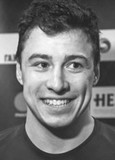The process of calculating the proportion of unproductive mental and physical movements and actions in a judoka's execution of techniquesObjective of the study was to detect the presence of an algorithm in the chain of cause-and-effect relationships that
Ключевые слова:
judoka, confrontation with an opponent, ineffective intellectual-motor operations and actions, probabilistic consolidation, correlation algorithm, automated errors, warning.Аннотация
Objective of the study was to detect the presence of an algorithm in the chain of cause-and-effect relationships that govern the probabilistic consolidation of ineffective intellectual and physical actions and movements of a young judoka during training and competition, enabling teachers to prevent the negative trend of memorization and the emergence of automatic errors in performance.
Methods and structure of the study. The study employed video analysis, cluster analysis, and descriptive statistics to examine the structural elements of movement. The research focused on a group of coaches from the Sambo – 70 Sports and Education Center, who evaluated the preconditions and causes of technical mistakes made by a young judoka in two competitive scenarios.
Results and conclusions. In the fundamental groups, it is not the preconditions that are determined, but the semantic structures of the direct activity format that mirror the substance of the appropriate practical advice from the instructor. The creation of a positive competitive experience for a young judoka should be grounded in the examination of semantic units within the algorithm of the ratio of ineffective intellectual and motor operations and actions to prevent the process of its transformation into an algorithm for their consolidation.
By dissecting the causes of mistakes through semantic analysis, we can discern the path for pedagogical influence to update the content of training and competitive activities.
Библиографические ссылки
Anokhin P.K. Ocherki po fiziologii funktsionalnykh sistem. Moscow: Meditsina publ., 1975. pp. 17-59.
Bernshteyn N.A. Fiziologiya dvizheniy i aktivnost. Moscow: Nauka publ., 1990. pp. 373-392.
Bogen M.M. Obucheniye dvigatelnym deystviyam. Moscow: Fizkultura i sport publ., 1985. 192 p.
Gordeeva N.D., Evsevicheva I.V., Korneev A.A. Osobennosti organizatsii seriynykh sensomotornykh deystviy. Vestnik Moskovskogo universiteta. Seriya 14: Psikhologiya. 2007. No. 4. pp. 64-74.
Gordeeva N.D. Produktivnyy khaos kak usloviye porozhdeniya sovershennogo deystviya. Voprosy psikhologii. 2007. No. 3. pp. 116-126.
Gordeeva N.D., Zinchenko V.P. Rol refleksii v postroyenii predmetnogo deystviya. Refleksivnyye protsessy i upravleniye. 2002. Vol. 2. No. 2. 90 p.
Kuzmenko G.A. Kontseptsiya intellektualnogo razvitiya podrostkov v detsko-yunosheskom sporte. Moscow: MPGU publ., 2017. 212 p.
Platonov V.N. Podgotovka kvalifitsirovannykh sportsmenov [. Moscow: Fizkultura i sport publ., 1986. 288 p.

Дополнительные файлы
Опубликован
Как цитировать
Выпуск
Раздел
Лицензия
Copyright (c) 2025 Theory and Practice of Physical Culture

Это произведение доступно по лицензии Creative Commons «Attribution» («Атрибуция») 4.0 Всемирная.
